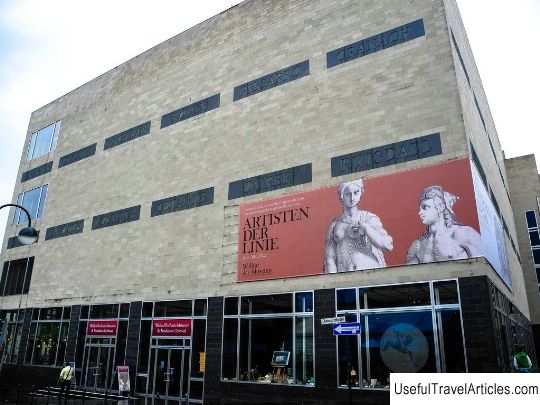Roman-Germanic Museum in Germany, Cologne spa
Rating: 9,4/10 (8372 votes)  The Roman-Germanic Museum is one of the most visited in Cologne. The museum was founded in 1946 as one of the branches of the Walraf-Richartz Museum, as a result of the merger of the German and Roman expositions. In 1974, the museum became an independent structure. The exhibits were moved to a separate building located next to the Cologne Cathedral. This building was erected on the ruins of a Roman villa discovered in 1941 during archaeological excavations. The museum now houses a research department with important scientific work, as well as the Cologne Archaeological Archives. The main part of the exhibits consists of finds discovered during archaeological excavations, held in Cologne and its surrounding areas. The pearl of the exposition – The Mosaic of Dionysus, discovered in 1941, adorned with scenes from the life of Dionysus – god of winemaking. According to experts, this mosaic was created in the 220s. Another notable exhibit is the tombstone of the legionnaire Poblisia, dated 40 AD. On the ground floor, you can observe objects used by the townspeople in I – IV centuries in everyday life and everyday life. On the second floor, there are exhibits telling about the era of Emperor Augustus, which were discovered in the Rhine port, on the site of the old wooden bridge over the Rhine, which existed under the Emperor Constantine, and in the settlement of Divitia. The museum exposition is complemented by a round tower and a preserved part of the wall, once surrounding the city. Also noteworthy is the exposition telling about the history of the founding and development of the Cologne region. Here you can see finds dating back to the Paleolithic era, as well as the Bronze and Iron Ages. Mark Vipsanius Agrippa was the founder of the settlement that existed on the site of modern Cologne. The development of the city can be judged by the surviving elements of houses, wall paintings, ceramics and sculptures. The museum contains altars and many cult objects made of clay, bronze and stone. Also worth visiting is the museum's collection of glass, both colored and ordinary – glasses, visual glasses, dishes, etc. We also recommend reading National Suramadu Bridge in Indonesia Topic: Roman-Germanic Museum in Germany, Cologne spa. |




